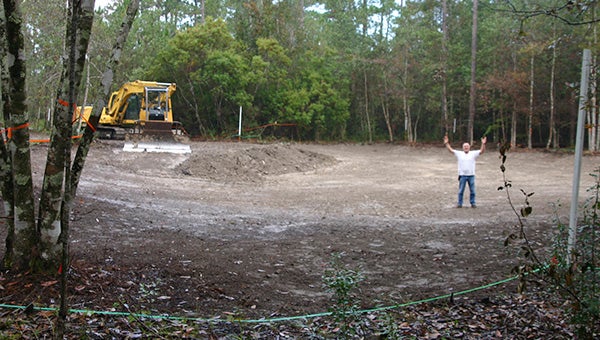Arboretum Paths: Native plants are delightfully low care
Published 9:23 am Wednesday, June 22, 2016

: When bare ground appears, as with the Arboretum’s Gum Pond Exhibit in 2010, plants will quickly “rush in” to stake a claim (Image: Pat Drackett).
While collecting milkweed seed in our south pitcher plant bog last week, I saw many butterflies, bees, and other insects working the diverse collection of blooming perennials. It crossed my mind that last week’s column had focused on our recently renovated pollinator garden, but our Savanna Exhibit is really just a twenty acre native pollinator garden!
This Saturday, June 25 at 10:00 a.m. the Arboretum will offer a summer wildflower walk. Beginning at the Visitor Center, the group will journey around the Piney Woods pond, through the Woodland Exhibit, and into the Savanna Exhibit which contains our south pitcher plant bog. You may think that summer is not a practical time to be out in the sun exploring plants, but let me assure you that this is a very exciting time to see what is blooming.
Walk participants will learn about the tough, low-care native plants blooming in our pine savanna, and the species that can be used use in their home landscape. Both our upcoming aquatic plant sale on July 9 and the wildflower walk will be events where gardeners can learn about plants that offer sustainable choices for the home landscape.
Using plants that are adapted to growing in our region means they will potentially require less care, watering, and chemical applications once they become established.
Are you one of those who claims that you can’t keep anything alive? Look around you – plants are growing everywhere!
The overall concept in using low-maintenance Mississippi native species is to pay attention to the specific kinds of habitats your property offers. Then, you will be able to choose the plants that prefer those conditions. Learn the “character” of your property – where are the wet and dry areas are, the intensity of shade and sun, and how the pattern of sunlight changes throughout the day.
Although these concepts sound extremely simple, we have become experts at working against it. Many of us still try to fit the plants we purchase on impulse into our landscape, and plant after the fact. If we are lucky, a new addition will succeed. But more likely than not, without pre-planning, it will always look out of place.
What is the pH of your soil? You may submit a sample to your local Extension office in Poplarville, Once armed with information, you will be better able to choose the plants that thrive under certain conditions.
At the Arboretum, visitors have an excellent opportunity to see which plants grow together in communities, because they all prefer the same environmental conditions to thrive. Sometimes, when at a garden center and strolling through a sea of plants hailing from other counties, I wonder what they look like in their own native environments. Unless we travel to the places these plants originate from, we don’t have the benefit of seeing how they grow, and the companion plants they grow with.
Want a taste of this idea? Find your favorite Internet search engine and enter “flame azalea” and “Appalachians” for some beautiful images of how these flowering shrubs look with a mountain backdrop.
Have you ever had the chance to observe plants that will populate fresh, bare ground? If you create habitat, they will quickly move in. Seeds are carried by the wind and deposited by wildlife. It won’t be long before every square inch is covered with plants. Learn from this! A children’s workshop on insect exploration will be held Thursday, June 29, from 10:00 a.m. to noon with Hancock County Extension Agent Christian Stephenson. Cost for non-members’ children is $2. Children to be accompanied by parent or guardian (no charge for adults).
Our Aquatic Plant Sale will be Saturday, July 9, from 9:00 a.m. to noon. Explore a diverse selection of non-invasive native aquatic plants. Many are divisions from our exhibits. Site admission is free.
Project Wild teachers’ workshops will be held on Thursday, June 24 and Thursday, July 14 from 9:00 a.m. to 3:00 p.m., led by outreach educator Sabrina Cummings, Mississippi Museum of Natural Science. Teachers and homeschool educators still have time to call 601-799-2311 to register.
See www.crosbyarboretum.msstate.edu for more information. The Arboretum is open Wednesday throughSunday from 9 a.m. to 5 p.m. and located in Picayune, I-59 Exit 4, at 370 Ridge Road.
By
Patricia R. Drackett, Director and Assistant Extension Professor of Landscape Architecture
The Crosby Arboretum, Mississippi State University Extension Service



